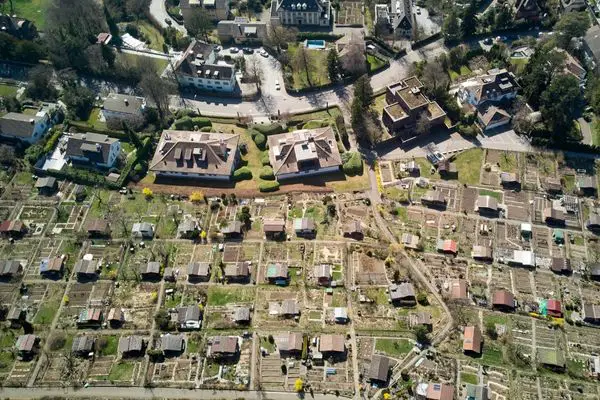Change in ownership of a property in the Philippines happens all the time. For example, a buyer agrees to acquire a tract of land from its original at a certain price so he or she can build a house, plant crops, or establish a business presence on that property. The buyer, either an individual or a corporation.
As proof of ownership, a land title is a legally binding certificate that indicates who is the legitimate owner. Once the seller concedes ownership to the buyer, a land title will have to be updated so the name of the rightful owner is transferred from the seller to the owner.
Table of Contents
What is a land title?
In the Philippines, a land title is a legal document issued by the Land Registration Authority. It represents an individual’s ownership of a piece of land described in the document.
What is the purpose of a land title?
More than just proof of real estate ownership, a land title also serves the following purposes:
- Helps an owner establish authority over the property and can be used to evict illegal settlers from the property.
- Used as proof of ownership and a required document if an owner wishes to build or renovate a house or establish a business within its defined premises.
- Used to establish proof of legal boundaries between properties.
- Helps owner obtain loans and other financial transactions by using the land title as collateral.
A land title is a powerful document as once it is registered, it cannot be defeated even by adverse, notorious possession. As a binding, conclusive document, it is issued as absolute proof of ownership of the property whose name appears on the land title documentation. Thus, even when someone claims ownership by virtue of occupying the property for many years, he or she can’t be legally considered an owner without a land title under his or her name.
Deed of sale vs land title: What is the difference?
Although both have something to do with property ownership, the deed of sale and land title are different. A deed of sale is a preliminary requirement that leads to the issuance of a land title. It is proof that a transaction has occurred between the property seller and the buyer. Once the deed of sale document has been notarized and signed, it serves as proof that both parties have fulfilled the requirements of the sale.
In the Philippines, the deed of sale is required by the Bureau of Internal Revenue to review and process tax payments before the land title is transferred from one ownership to another.
An accomplished deed of sale paves the way for the processing of land titles under the new owner’s name. In short, before a land title is issued, both the property owner/seller and the buyer has to work on the deed of the sale first.
Note to readers:
Steps and procedures, along with required documents and tax rates may change at any given time without our prior knowledge so please treat the following information as a rough guide.
How much does it cost to transfer land titles in the Philippines?
The cost of a transfer of land title in the Philippines from an old to a new property owner will depend on the following factors:
- The property’s assessed value. This value is reflected in the amount shown in the deed of sale.
- The location of the property. The property tax is typically the same across the country, but fees may vary depending on the local government that has jurisdiction over the property.
What are the taxes and fees payable during land title transfer?
- Capital gains tax – this is 6% of the property’s selling price as indicated in the deed of sale or the zonal value, or whichever is higher. This is typically paid by the Seller.
- Documentary stamp – 1.5% of the property’s selling price as indicated in the deed of sale or the zonal value, or whichever is higher. The buyer usually pays this fee.
- Withholding tax – Applied to properties owned by corporations. This is typically paid by the Seller
- Outstanding taxes – Any missed tax payments that are already due. This is typically paid by the Seller.
- Registration fee – Worth 0.25% of the property’s zonal value or selling price, or fair market value, depending on which is higher. This is typically paid by the Seller.
- Broker’s fee – refers to any payments in exchange for a real estate agent or broker’s assistance during the transfer of land title in the Philippines. This is typically paid by the Seller.
- Miscellaneous fees – This may refer to incidental or other fees incurred during the registration process. This is typically paid by the Buyer.
Even though the above table indicates which party is responsible for the payment of certain taxes and fees, it is not legally bound by law. The buyer or seller can negotiate between themselves on who is paying for what during the process of land title transfer.
Requirements for transfer of land title
To transfer ownership of a land title, the following documents are required, as applicable. A Revenue District Office examiner may require additional information in order to evaluate the documents and determine the next step.
- Notarized Deed of sale or Contract to Sell
- Tax Identification Number and ID of the buyer and the seller
- Transfer Certificate of Title for a house or a lot
- Condominium Certificate of Title (for condominiums)
- Tax Clearance
- Tax Declaration
- Real Property Tax for the current year
- Management certificate from the condominium admin
- Certificate of non-tenancy from the condominium admin
- Photo of the property for sale
- Sworn Declaration of No Improvements to show that the sold property hasn’t incurred any improvements
- Special Power of Attorney (SPA) if the person signing is not the owner indicated in the deed of sale
- Certificate of the Philippine Consulate if the SPA was executed abroad
- Marriage Certificate, Birth Certificate, and Certificate of No Marriage
- Vicinity map or location map of the property
- Other documents required by the Register of Deeds, like consolidation of ownership or mortgage settlement
Land title ownership transfer procedure
The steps may be a few but the requirements are plenty so ensure that you have everything listed below before you or a representative such as a real estate broker will facilitate the land title transfer process.
STEP 1: Prepare the documentary requirements.
Have the original and photocopies of the required documents ready for seamless and avoid delay in processing. Please refer to “Requirements for transfer of land title” above.
STEP 2: Submit Deed of Sale for Tax Computation
Submit the signed and notarized deed of sale, along with the other required documents from the list above, to a nearby Revenue District Office. An examiner from the BIR will evaluate your document and compute taxes such as capital gains tax or creditable withholding tax.
Once assessed, these taxes have specific timelines to accomplish.
- Capital Gains Tax should be paid within 30 days from the date of notarization,
- DST should be paid on the nearest fifth day of the month after the notarization date.
Pay the fees before a set deadline to avoid penalties.
STEP 3: Pay the Required Taxes
You may now proceed to any authorized bank duly accredited by the BIR and pay the required documentary stamp tax, value-added tax, and capital gains tax.
The following documents might also be required, so have them handy:
- The signed computation sheet from the BIR
- Deed of Conveyance – A document that indicates the transfer of ownership from the previous owner or seller to the buyer
- 3 copies of duly filled out BIR Form 1706 for Capital Gains Tax signed by the seller
- 3 copies of filled out BIR Form 2000-OT to pay for Documentary Stamp signed by the buyer
STEP 4: Get a Certificate Authorizing Registration
The Certificate of Authorizing Registration (CAR) is mandated by the National Internal Revenue Code. It’s a tax clearance document and proof that all taxes entailed with the sold property have been paid and settled accordingly.
You can claim the CAR as scheduled along with these documents which should have already been stamped by the BIR:
- Deed of sale – Original copy stamped received by the BIR
- Duplicate Copy of the CCT or TCT as received by the BIR
- Original copies of the Form 2000 (DST and the BIR Form 1706 CGT) stamped received by the BIR
- Tax Declaration for land and improvement
- You’ll receive two copies of the CAR. The brown copy is for you to keep while the blue copy is for you to use during the transfer.
STEP 5: Submit the CAR to the Local Treasurer’s Office
At this stage, you need to submit your CAR to the local Treasurer’s Office for the Transfer Tax. Make sure to pay the Transfer Tax within 60 days after the notarization of the Deed of Conveyance.
Upon payment, the Treasurer’s Office will provide you with a receipt as proof of payment of Transfer Tax. You’ll then need to go back to the BIR to have the Deed of Conveyance stamped.
After this stage, you should have the original Deed of Conveyance stamped marked, and signed by both the BIR and the Treasurer’s Office.
STEP 6: Submit the documents to the Registry of Deeds for Registration
It’s now time to register your property. You can now proceed to the Registry of Deeds and submit the following:
- Deed of Conveyance
- Deed of Absolute Sale
- Copies of IDs of all signatories
- Official Receipt of Notary Public used to notarize the deed of sale
- Certified True Copy of the Original land title
- Tax Clearance
- Latest Tax Declaration
- Clearances from the Home Owners Association, if applicable
- Birth Certificate
- Certificate of No Marriage / Marriage Certificate
Once you’ve submitted the required documents and paid the registration fees, you usually need to wait for two weeks before you can acquire the new land title under your name.
STEP 7: Secure a New Tax Declaration from the Local Assessor’s Office
transfer land title in the Philippines – Secure a New Tax Declaration from the Local Assessor’s Office
With your new title acquired from the Registry of Deeds, you can now secure a New Tax Declaration Certificate from the Assessor’s Office. The new owner should pay all assessment fees under the new tax declaration.
Here are some documents you may need to submit:
- Original copy and photocopy of the new land title
- A copy of the old title named under the previous owner
- Deed of Conveyance
- Certified True Copy of the New Tax Declaration
- Business Tax Receipt or Business Permit, if the previous owner is a corporation
- Duplicate copy and photocopy of the Certificate Authorizing Registration (CAR) from the BIR
- Tax Clearance
STEP 8: Receive the Land Title
Once all obligations are fulfilled and requirements submitted as of the last step, the Land Registration Authority will issue the land title. As part of the Land Registration Authority’s Land Titling Computerization Project, an e-Title is a digital version of your land title which provides protection of your title from tampering and destruction.
Land title transfer in the Philippines can be a complex process, but it is necessary in order to ensure legal ownership and avoid future disputes. The process involves several steps, including the execution of a Deed of Absolute Sale, the submission of requirements to the Register of Deeds, and the processing of the transfer of title. To ensure a smooth and successful transfer of land title, it is important to follow the guidelines and to seek the services of a legal professional.


